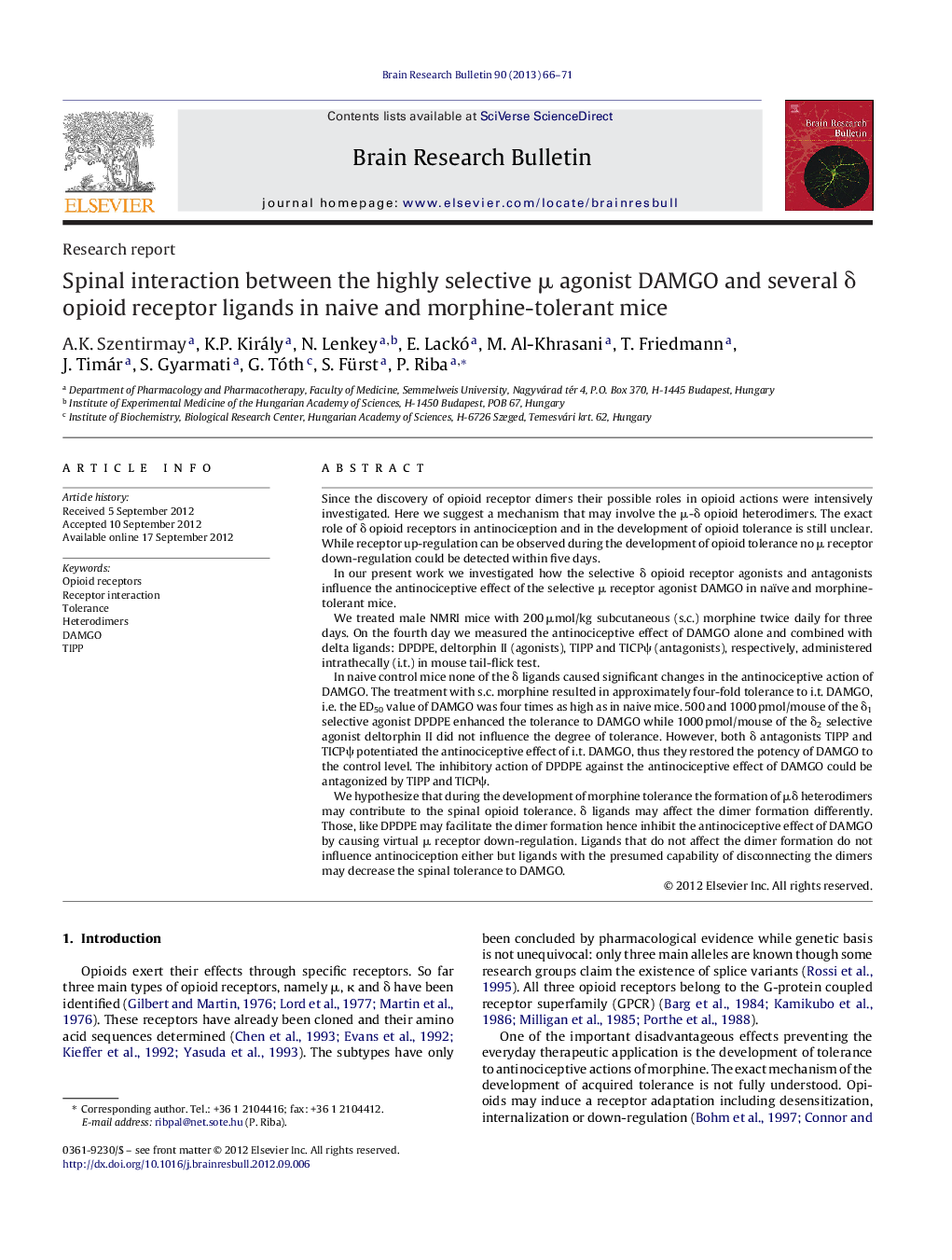| Article ID | Journal | Published Year | Pages | File Type |
|---|---|---|---|---|
| 6261860 | Brain Research Bulletin | 2013 | 6 Pages |
Since the discovery of opioid receptor dimers their possible roles in opioid actions were intensively investigated. Here we suggest a mechanism that may involve the μ-δ opioid heterodimers. The exact role of δ opioid receptors in antinociception and in the development of opioid tolerance is still unclear. While receptor up-regulation can be observed during the development of opioid tolerance no μ receptor down-regulation could be detected within five days.In our present work we investigated how the selective δ opioid receptor agonists and antagonists influence the antinociceptive effect of the selective μ receptor agonist DAMGO in naïve and morphine-tolerant mice.We treated male NMRI mice with 200 μmol/kg subcutaneous (s.c.) morphine twice daily for three days. On the fourth day we measured the antinociceptive effect of DAMGO alone and combined with delta ligands: DPDPE, deltorphin II (agonists), TIPP and TICPÏ (antagonists), respectively, administered intrathecally (i.t.) in mouse tail-flick test.In naive control mice none of the δ ligands caused significant changes in the antinociceptive action of DAMGO. The treatment with s.c. morphine resulted in approximately four-fold tolerance to i.t. DAMGO, i.e. the ED50 value of DAMGO was four times as high as in naive mice. 500 and 1000 pmol/mouse of the δ1 selective agonist DPDPE enhanced the tolerance to DAMGO while 1000 pmol/mouse of the δ2 selective agonist deltorphin II did not influence the degree of tolerance. However, both δ antagonists TIPP and TICPÏ potentiated the antinociceptive effect of i.t. DAMGO, thus they restored the potency of DAMGO to the control level. The inhibitory action of DPDPE against the antinociceptive effect of DAMGO could be antagonized by TIPP and TICPÏ.We hypothesize that during the development of morphine tolerance the formation of μδ heterodimers may contribute to the spinal opioid tolerance. δ ligands may affect the dimer formation differently. Those, like DPDPE may facilitate the dimer formation hence inhibit the antinociceptive effect of DAMGO by causing virtual μ receptor down-regulation. Ligands that do not affect the dimer formation do not influence antinociception either but ligands with the presumed capability of disconnecting the dimers may decrease the spinal tolerance to DAMGO.
⺠Spinal opioid tolerance development in mice involves opioid receptor interactions. ⺠Spinal antinociceptive effect of delta receptor agonists is mediated by mu receptors. ⺠Delta ligands interact with mu-delta heterodimers influencing tolerance development.
